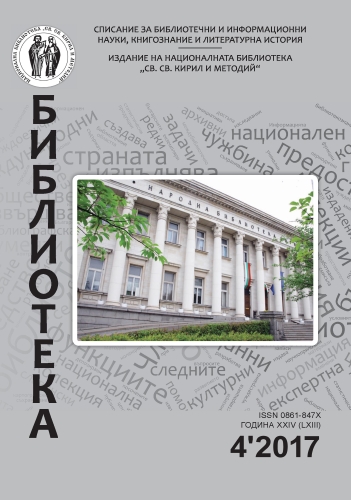Опыт реставрации документов на бумажной основе из собрания ВИМАИВиВС, поврежденных силикатным клеем
An attempt to restore paper based documents from the collection of the Military-Historical Museum of Artillery, Engineer and Signal Corps, Russian Federation, damaged by silicate adhesives
Author(s): Irina Gennadievna KuleshovaSubject(s): Essay|Book Review |Scientific Life
Published by: Национална библиотека »Св. св. Кирил и Методий«
Keywords: Military-Historical Museum of Artillery; Engineer and Signal Corps (VIMAIV&VS); damages; silicate adhesive; restoration;
Summary/Abstract: This article presents the experience of the restoration experts at the Military-Historical Museum of Artillery, Engineer and Signal Corps, Russian Federation with documents damaged by silicate adhesives. Migrating into the structure of the base paper, the silicate adhesive accelerates deterioration during storage of documents. With age, the paper becomes brittle, fragile, breaks apart, alters its colour, the painting layer gets destroyed, the ink of manuscripts tends to fade.Book repair guides providing advice to restoration experts, insist that use of water with documents damaged by silicate adhesives is unacceptable. The first step is to separate the adhesive layer with a cutting tool – a sharp scalpel, using a dry technique and to neutralize the alkaline environment of damaged area. This is a basic principle in repair of documents damaged by silicate adhesives. With thick and dense paper, the adhesive film is scraped off along with an extremely thin layer of the paper texture which is considered acceptable.If the document is produced of thin paper and suffers mechanical damages like tears, creases, paper strips glued to its surface, the adhesive layer showing up on the front of the document i.e. on the image, then completing the procedure of label and adhesive removal with a cutting tool without damaging the original is practically impossible. The adhesive layer itself cannot be teased away completely.To remove tapes and neutralize high alkalinity “The Method for restoration of documents with tapes containing silicate adhesive” is used. The essence of the method is to treat the document damaged by silicate adhesive with a 0,9–2% aqueous solution of the chitosan hydrochloride salts.The specifics about the reaction of the hydrochloride salts of chitosan is that by penetrating deep into the adhesive, the solution softens the silicate adhesive and neutralizes increased alkalinity which facilitates adhesive removal from documents produced of thin papers and helps avoid further mechanical damages.Following manipulation with a solution of chitosan hydrochloride salts and removal of tapes, the documents can receive further conservation treatment by means of water techniques with no risk to the painting layer or text.
Journal: Библиотека
- Issue Year: 2017
- Issue No: 4
- Page Range: 23-26
- Page Count: 4
- Language: Russian

